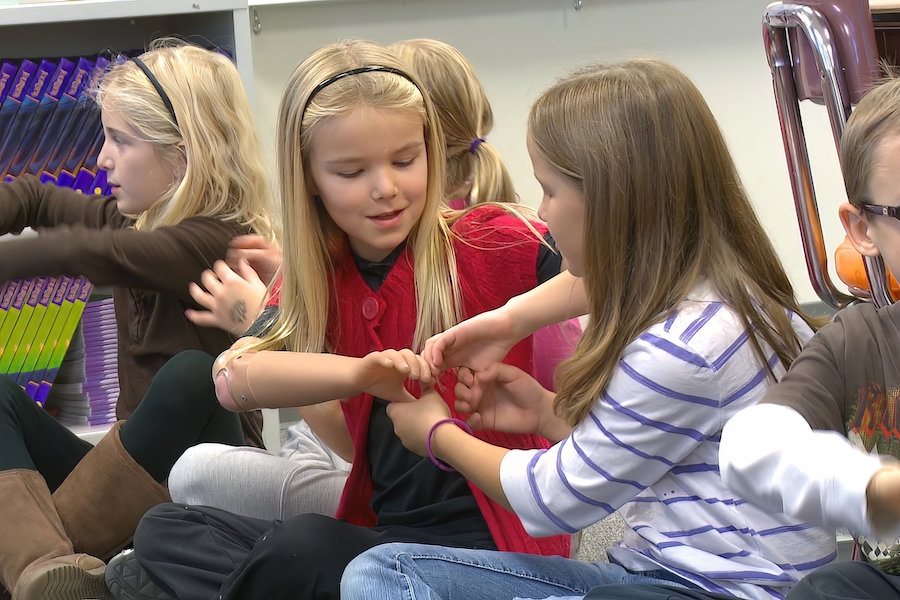When a child grows up without either of their hands, they don’t know any other way of living. These children are resilient and find creative ways to move toward independence, but it is still daunting for parents to envision what their child’s life will be like “without.”
In this article, we’ll discuss how parents of children with congenital limb differences can find support for themselves and their child. We’ll also look at how older children and adults with congenital bilateral limb differences can learn about life hacks and prosthetic options.
Navigating a world that is different than our own can be overwhelming, which is why it is important to connect with others who can relate. There is support available for parents of children missing both of their upper limbs. Support groups, peer advice, inclusive camps, and good prosthetic care can allow a child to grow up enjoying many of the same activities as their friends.
Our patient Jameson was born with short arms that stopped growing at the elbow. His parents found out while Brooke, Jameson’s mother, was pregnant. At seven months old, Jameson was fit with passive prostheses to get him used to wearing devices while also aiding in his development. At 18 months, he was fit with myoelectric prostheses. Jameson’s father, Jim, remembers, “We kind of questioned whether starting him with prostheses so early was a good idea, but we asked his prosthetist, Mac, at our very first appointment, ‘What would you do if he was your son? What would you do if your son was born without arms?’ and he answered, ‘Oh, I’d start prosthetics immediately.” While Mac's enthusiasm is surely due to his chosen career, his expertise has allowed Jameson to thrive. You can watch Jameson use his myoelectric arms in his patient profile video below and you can read about Jameson at age 12 and his most recent prosthesis in our article where we interviewed him and his mom.
For parents looking for resources to support them and their child with a limb difference, please check out our article, “Resources for Parents of Children with Upper Limb Differences or Limb Loss.”
Adults with congenital limb difference on both sides may find themselves facing overuse issues like joint and muscle pain. Our prosthetists are skilled at evaluating peoples' current devices and figuring out how a new one could alleviate any issues the patients are experiencing. Silicone sockets are often an option they recommend as part of a new prosthesis. These silicone sockets can, for many people, improve comfort and allow for longer wear times. Our bilateral patient Gerry (who is not congenital) has been wearing silicone sockets for a few years now. He operates power saws, trimmers and weed eaters; does welding, woodworking and electrical wiring; and drives a tractor, a front-end loader and a truck. Thanks to his silicone sockets, “Between my body-powered and my myoelectric arms, I’ve easily worn them 18 hours a day,” he said.
Another way is to make one’s home environment as easy to navigate as possible. Check out our blog articles “Bathroom Hacks for People with a Bilateral Limb Difference,” “Home Modifications for People with a Bilateral Upper Limb Difference” and “Using Universal Design in Home Remodeling for People with a Limb Difference.”
If you have or are going to have a child with a bilateral limb difference, we encourage you to speak with a prosthetist as soon as you are comfortable to have a better idea of the options available for your child. If you are an adult with a bilateral limb difference and would like to learn more about how to make sure your prosthetic devices are as comfortable as possible, please contact us. Thank you so much for reading, and please leave any comments you may have below.


.jpg?width=900&height=600&name=Jamison%20Young-Old%20Listing%20(2).jpg)


%20President%20and%20Senior%20Clinical%20Director.jpg?width=600&height=600&name=John%20M.%20Miguelez%2c%20CP%2c%20FAAOP(D)%20President%20and%20Senior%20Clinical%20Director.jpg)










No Comments Yet
Let us know what you think